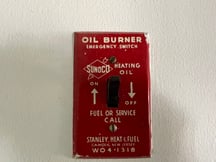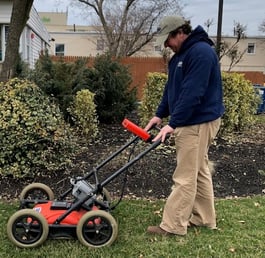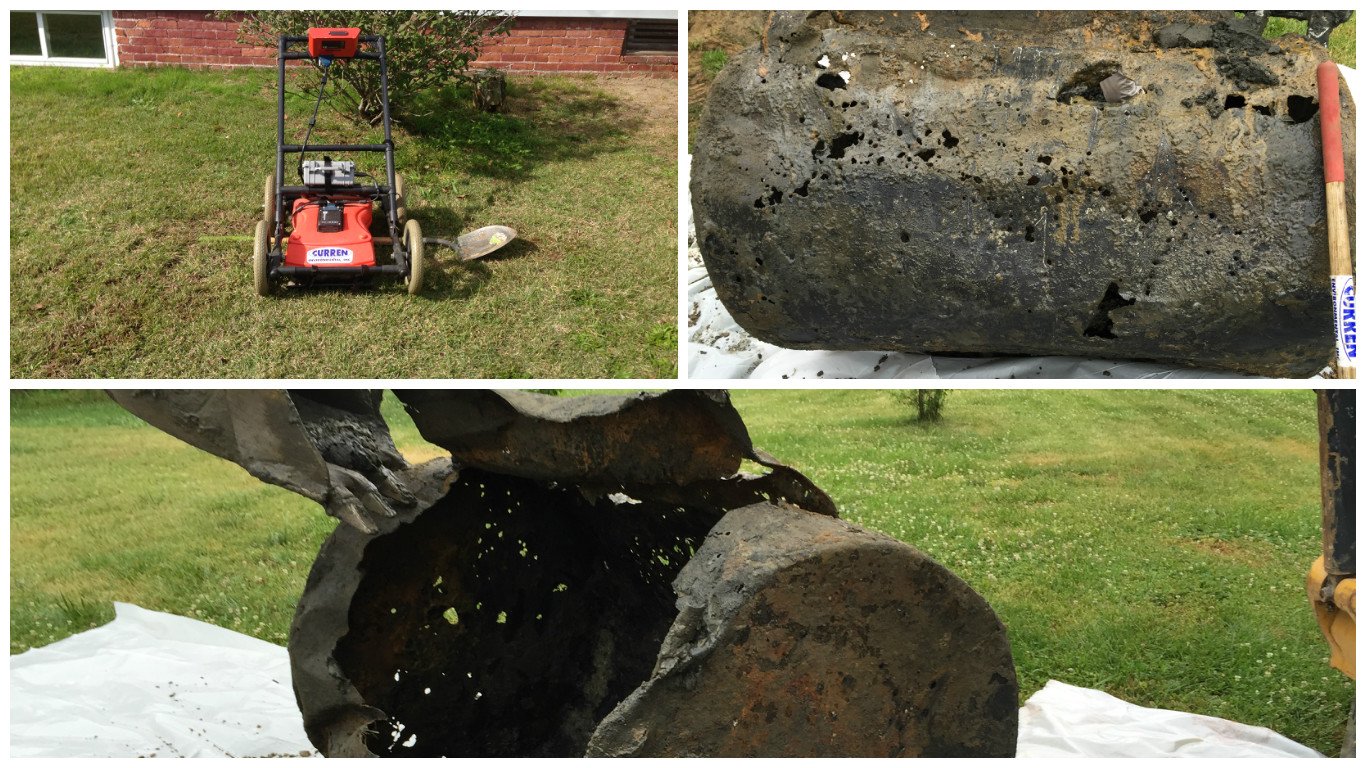Does the owner of the property have to be made aware tanks weep is being performed?
A tank sweep is a form of due diligence, like a home inspection, every seller has to allow inspections, although they don’t have to agree to fix anything. Every seller should be aware that the buyer is paying for these inspections, so they are aware these items are a concern. Nobody likes to be surprised by problems, which inspections by nature are looking for.
The owner should be aware we are doing an inspection specific to oil tanks because if we find a tank we want it removed and I was told they have no knowledge of any oil heat.
Do you need to go inside the building during a tank sweep?
100% you have to go inside the building and inspect for evidence of prior oil heat. Anyone not going inside is doing an incomplete inspection. To provide a thorough tank scan, Curren needs access to the basement heater room during the scan and no cars in the driveway.
An oil burner switch and an oil burner fuse inside the door are both clues that are indicative of oil heat. Curren also sees "cut outs" in the flooring of the basement, or lines sticking out of the flooring, both are clues that an oil tank was present on the property at some point in time.



Speaking of visual assessment as part of a tank sweep, one of the photos below suggests an oil tank the other is 100% not an oil tank. The trained technician knows the difference.

![lClUW0yuSZuqaJQmdD7CjA[1]](https://www.currenenvironmental.com/hs-fs/hubfs/lClUW0yuSZuqaJQmdD7CjA%5B1%5D.jpg?width=227&height=171&name=lClUW0yuSZuqaJQmdD7CjA%5B1%5D.jpg)
What happens if you find an oil tank during a tank sweep?
When a tank is found the owner/seller must be informed of the tank and that it needs to be removed and tested to verify no leaks. But it goes deeper than that, a cascading series of events occurs.
-
The settlement will need to be pushed back typically a month or more as you need time to get permits, remove the tank and get soil sample results. Example: We just had a tank located and removed prior to the settlement they pushed back settlement twenty days on day fourteen we removed the tank and it leaked, now the leak is reportable to the state environmental agency, and you will have to do reporting to the government, which takes time. As we waited a week for the test results, the settlement was not moved back any further, three days before settlement we get all the test results 100% failure and soil remediation required. The Realtor, mortgage company, and buyer were like deer in the headlights as there was no backup plan.
-
Find a tank, the seller must address the tank for the buyer or cancel the contract and disclose the tank to all FUTURE BUYERS, meaning updating the Disclosure Statement. A Realtor must update the listing referencing the tank. Example: had one where we found a tank, the seller canceled the contract, and got a new buyer but NEVER DISCLOSED the tank. Buyer found tank AFTER PURCHASE. Man, the number of attorneys and people getting sued was large and the buyer walked away winning.
-
Find a tank, and see if the seller will take care of it because as you have just read, they need to do the right thing. Buyer can push back settlement until at least the tank is removed and soil sample results are returned, and it can be determined if remediation is or is not required. Example: Had this situation occur, but the tank was found under a deck, buyers paid for soil testing where we could test, and contamination was found. We found cancer, but the extent was not known because the deck prohibited access to drill test borings. The buyer and seller came to some financial agreement on the purchase and the buyer got monies back or off the purchase price. We remove the tank and performed a remediation, but the contamination was extensive, and the buyer needs more money to clean up the leak but the seller is saying they agreed on an amount and no more funds will be provided.





















